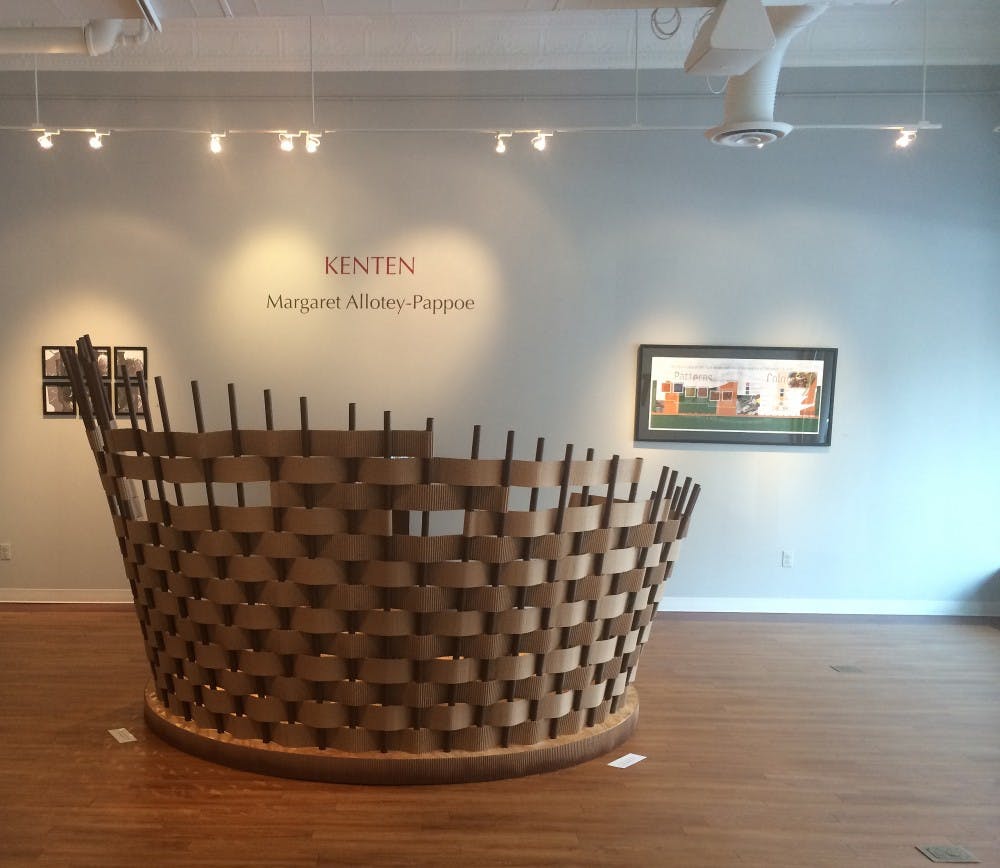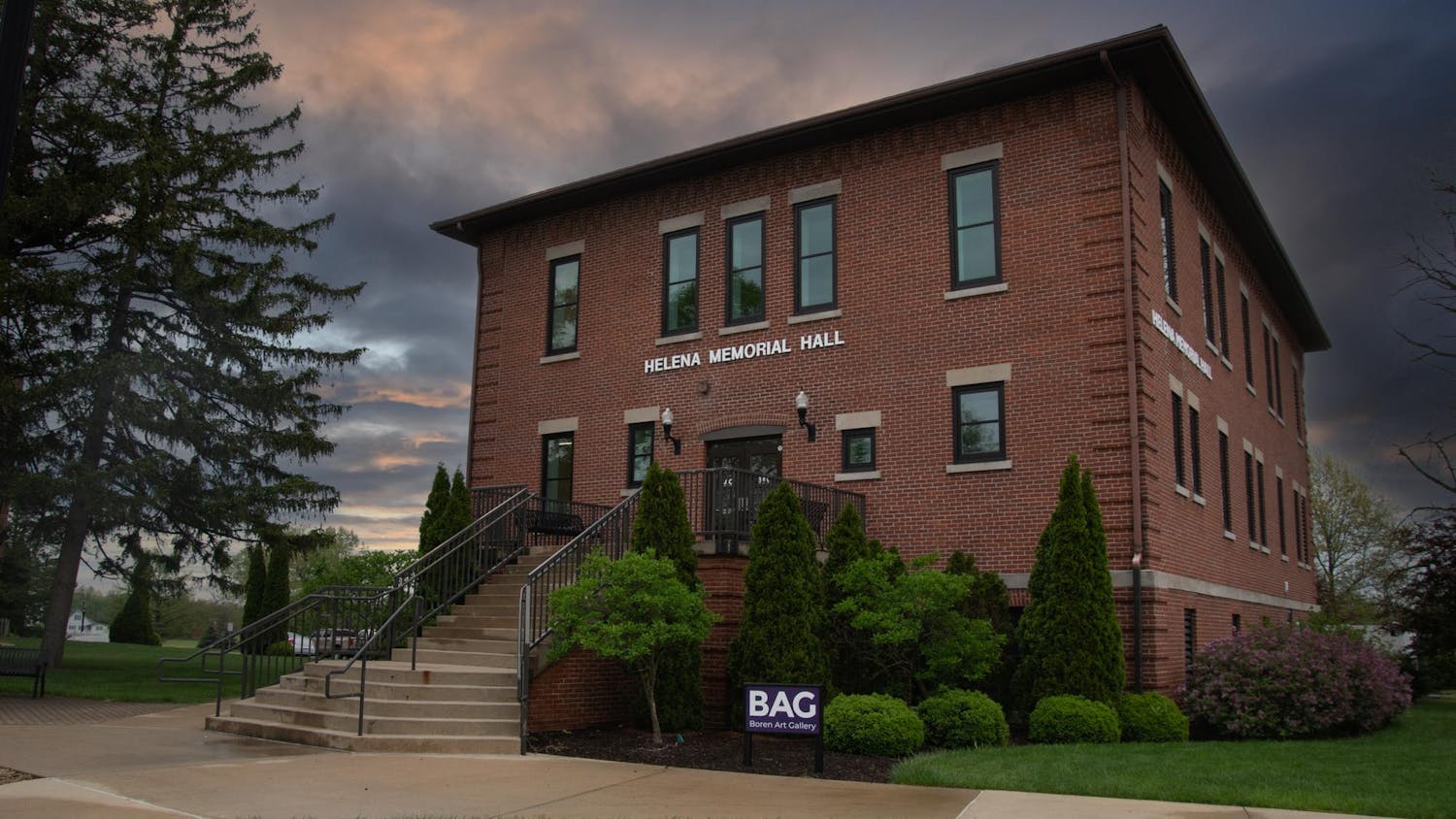By Abigail Roberts | Echo
Margaret Allotey-Pappoe, from Ghana, creates with art what many cannot come close to conveying with words. A professor of graphic design and the chair for the art and design department at Mount Vernon Nazarene University, Allotey-Pappoe is one of the artists whose work is currently displayed in the "Shadows and Light" display in Metcalf. With a BA Art in Communication Design from Kwame Nkrumah University of Science and Technology in Kumasi, Ghana and an MA and MFA in Visual Communication and Design from Bradley University, Peoria, Illinois, her love of art peaked when, as a high schooler, she began working with macramé, a weaving technique originating from early Arab traders.
Two standouts of Allotey-Pappoe's personal works are "A Slave Story" and "Kenton." "A Slave Story" describes Allotey-Pappoe's understanding of slavery in book form. Images, text and symbols relating to themes of slavery are scattered across its 13 folded pages. Within, Allotey-Pappoe reconstructed many historic slave trading symbols, putting her own twists and designs on them.
One of Allotey-Pappoe's most powerful works, "Kenton" is a large, 8-foot wide basket. Made of corrugated cardboard, Allotey-Pappoe's collapsible display is big enough to climb into and sit in.
Allotey-Pappoe's African heritage shines through all of her art, through the motifs and symbols she uses, her color palette of browns and oranges and the themes she raises through many of her works.
"Because I come from an African background, I enjoy sharing stories from Africa's history and my story and weaving them all together," Allotey-Pappoe said.

Story is essential to Allotey-Pappoe's creative pathway. The truth is, each human's story fits into a bigger picture. Art creates a space for people to share their story without being interrupted.
Allotey-Pappoe was one of the 10 artists chosen for the "Shadows and Light" traveling gallery exposition. For 16 days in 2013, the group came together, along with 10 professors from various U.S. universities, and shared ideas. Each artist then returned home and had six months to create pieces reflecting the topics raised.
"'Shadows and Light' brought to light things that had been forgotten or shoved under the carpet," Allotey-Pappoe said. "It is difficult because these (are) topics that many people don't want to address, (but) the more we can pay attention to and address these issues, the better."
The ideas stirred up within Allotey-Pappoe from "Shadows and Light," on race, cultures, people and Africa will stick with her for a long time. In response, she has begun to look more at what our role in society should look like.
"After four years, I am still trying to unpack some of these ideas," Allotey-Pappoe said.
This year, Taylor's Office of Intercultural Programs' theme is Ubuntu, as shared in last Friday's chapel. This word and concept were continuously brought up in Allotey-Pappoe's journey with "Shadows and Light." It actually led her to pioneer an "art, truth and reconciliation" class this year at Mount Vernon Nazarene University.
Ubuntu translated means, 'we in me,' and 'without you I am less,' and is synonymous in many African cultures to family and community. As a community we contribute to each other's stories, care about each other's stories and act on issues that arise. Allotey-Pappoe paints these concept with every metaphorical brush stroke and also implements these concepts into her teaching.

"I ask my students, 'What is the problem you are trying to solve?'"Allotey-Pappoe said. "It goes back to the act of paying attention and responding in a way that will build a restored society. . . . I believe that art addresses the issues of the humanity in all of us; how can we create dialogue and move forward together?"
So what weaves us together? Allotey-Pappoe believes there is something that connects all of us together.
"You'd be amazed how your story has little connections with someone else's story," Allotey-Pappoe said.




